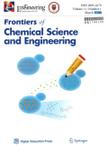Cryo-copolymerization preparation of dextran-hyaluronate based supermacroporous cryogel scaffolds for tissue engineering applications
Cryo-copolymerization preparation of dextran-hyaluronate based supermacroporous cryogel scaffolds for tissue engineering applications作者机构:State Key Laboratory Breeding Base of Green Chemistry Synthesis TechnologyCollege of Chemical Engineering and Materials ScienceZhejiang University of TechnologyHangzhou 310032China Department of Chemical and Biological EngineenngZhejiang UniversityHangzhou 310027China
出 版 物:《Frontiers of Chemical Science and Engineering》 (化学科学与工程前沿(英文版))
年 卷 期:2012年第6卷第3期
页 面:339-347页
核心收录:
学科分类:081702[工学-化学工艺] 08[工学] 0817[工学-化学工程与技术] 0805[工学-材料科学与工程(可授工学、理学学位)] 080502[工学-材料学]
基 金:Acknowledgements This work was supported by the National Natural Science Foundation of China (Grant Nos. 20876145 21036005) the Science and Technology Cooperation Project between China-Europe Country's Governments from the Ministry of Science and Technology of China (No. 1017) and the Zhejiang Provincial Natural Science Foundation of China (No. Y4080326)
主 题:cryogel scaffold tissue engineering dextran,hyaluronate 3T3-L1 preadipocyte
摘 要:Dextran-hyaluronate (Dex-HA) based supermacroporous cryogel scaffolds for soft tissue engineering were prepared by free radical cryo-copolymerization of aqueous solutions containing the dextran methacrylate (Dex-MA) and hyaluronate methacrylate (HA-MA) at various macromonomer concentrations under the freezing condition. It was observed that the suitable total concen- tration of macromonomers for the preparation of Dex-HA cryogel scaffold with satisfied properties was 5% (w/w) at the HA-MA concentration of 1% (w/v), which was then used to produce the test scaffold. The obtained cryogel scaffold with 5% (w/w) macromonomer solution had high water permeability (5.1 × 10 ^-2m2) and high porosity (92.4%). The pore diameter examined by scanning electron microscopy (SEM) was in a broad range of 50-135 um with the mean pore diameter of 91 um. Furthermore, the cryogel scaffold also had good elastic nature with the elastic modulus of 17.47±1.44 kPa. The culture of 3T3-L1 preadipocyte within the scaffold was investigated and observed by SEM. Cells clustered on the pore walls and grew inside the scaffold indicating the Dex-HA cryogel scaffold could be a promising porous biomaterial for applications in tissue engineering.



